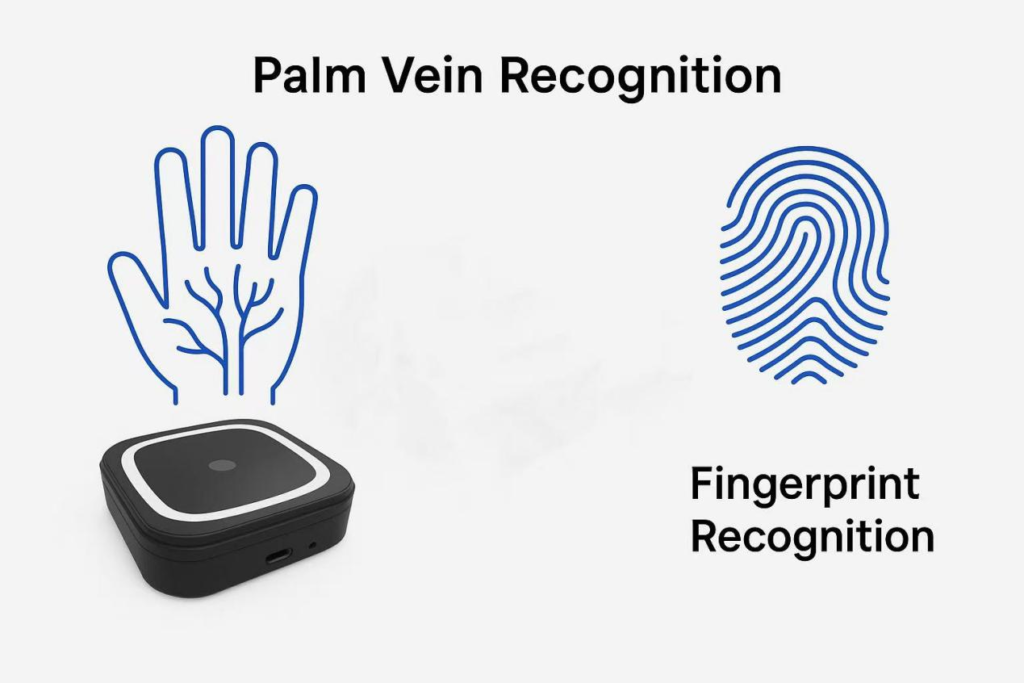by He Yu – Technical Dept. @ X-Telcom
Biometric technology is advancing rapidly—but not all biometric methods are equally reliable in the real world. Fingerprint recognition is common, but it often struggles in high-security, high-volume, or hygiene-sensitive scenarios.
At X-Telcom, we believe Palm Vein Recognition, powered by advanced Palm Vein Technology, is the smarter choice for enterprise-grade identity. It identifies users through unique subcutaneous vein patterns in the palm, captured using near-infrared light—making it far more secure and user-friendly than traditional fingerprints.
Palm Vein Recognition vs. Fingerprint Recognition: Key Differences
🧠 Why Palm Vein Technology Leads
Truly private
Palm vein patterns are internal and leave no trace, unlike fingerprints. That makes them extremely difficult to replicate or misuse.Better experience
Touchless scans improve user comfort and reduce infection risks—ideal for hospitals, airports, and public kiosks.Scales with confidence
Our Palm Vein Recognition algorithm has been tested with over 5 million identities, achieving high-accuracy results in less than 0.35 seconds.
🛠️ X-Telcom Palm Vein Scanner Devices
🔹 XT-PalmVein 01 USB Palm Vein Reader
- Interface: USB
- Platform Support: Windows, Linux, Android
- Ideal for: Government counters, hospital check-ins, desktop KYC
- SDKs: C++, Java, Python available
🔹 XT-WavePass500 Android Palm Vein Scanner Device
- OS: Android O.S
- Features: NFC, QR scanner, RS485, relay output
- Use Cases: Palm Pay, border control, smart access terminals
- Built for rugged enterprise environments with full SDK support
✅ Final Thoughts
If you’re building identity infrastructure that needs to be fast, safe, and scalable, Palm Vein Technology is your edge.
Compared to fingerprints, Palm Vein Recognition offers unmatched hygiene, anti-spoofing, and accuracy—especially in demanding real-world settings.
Ready to explore it?
Contact X-Telcom to request SDK access, demo devices, or a technical consultation.
Let’s build a more secure world—one palm scan at a time.



